How Snoopy Found his Way onto an Omega Speedmaster, and its Role in the Apollo 13 Incident
Houston... The Speedmaster helped solve the problem!
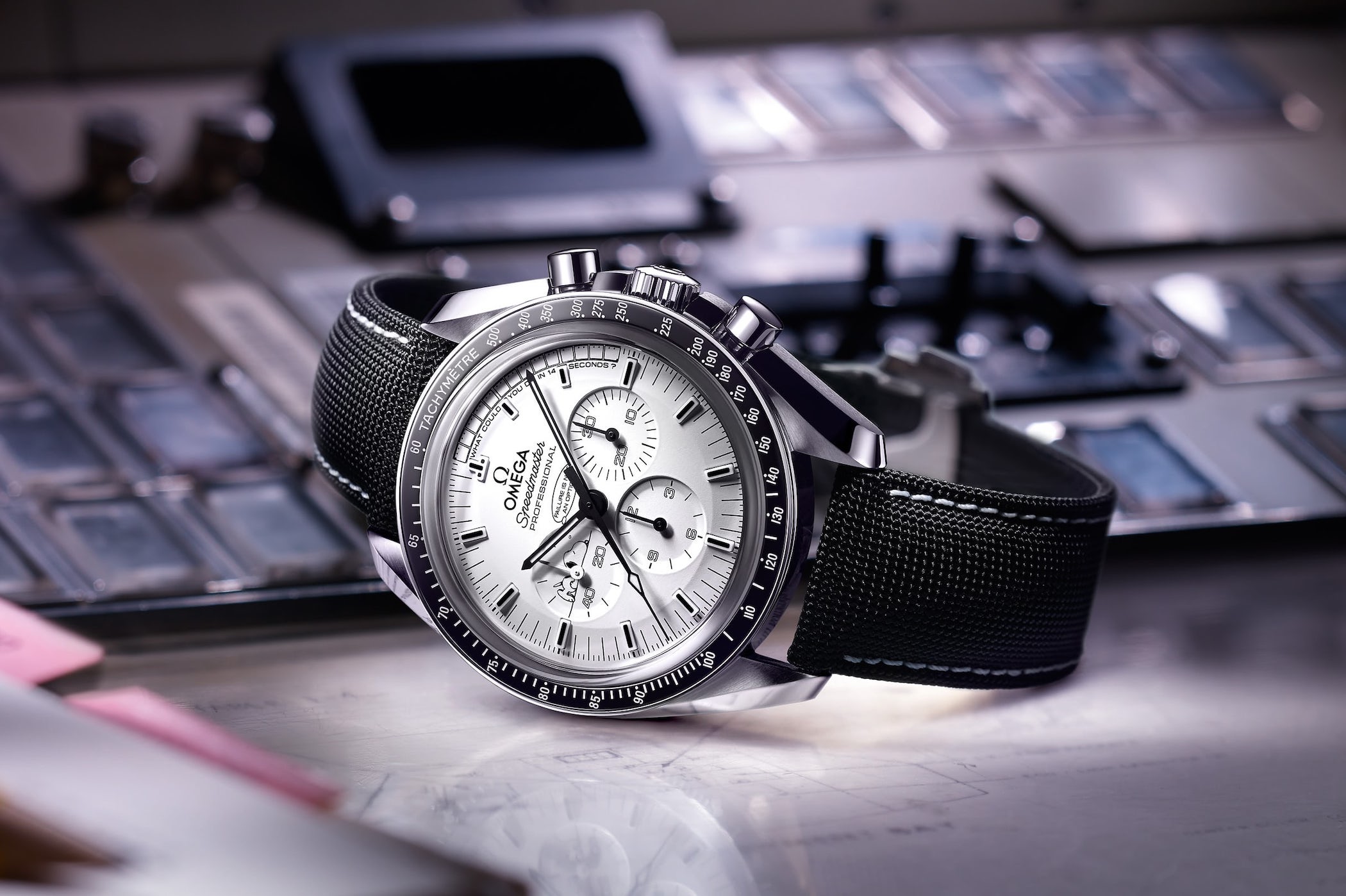
At first, this might raise some questions… What can the link be between a comic character, a chronograph watch and a space agency? While the connection between the last two should be quite familiar to most of you, watch enthusiasts (obviously), the presence of Snoopy in this 3-way equation is more questionable. Sure, Snoopy is cute and has become a cult character over the years, but why would he be printed on the dial and caseback of an Omega Speedmaster Moonwatch? What do space exploration, watchmaking and comics have in common? Well, the answer is simple: Apollo 13, an incident, the recovery of the crew and a special honour awarded for outstanding achievements.
As 2020 marks the 50th anniversary of Mission Apollo 13, we thought it would be a great idea to look back at the role of the Omega Speedmaster in recovering the crew, how it earned the Silver Snoopy Award and which Speedy watches are linked to Snoopy.
The Moonwatch on board Apollo 13
As all of us perfectly know by now, Omega was selected by NASA to become the official provider of timepieces for astronauts, being part of the mandatory equipment for Apollo missions. Following a series of drastic tests, performed by NASA’s James Ragan from late 1964 to early 1965, Omega’s chronograph, the Speedmaster Professional, was declared operational for space exploration and flight certified. And on July 1969, on the wrist of Buzz Aldrin, it became the first watch worn on the Moon. For all the details about how the Speedmaster became the Moonwatch, consult this in-depth article.
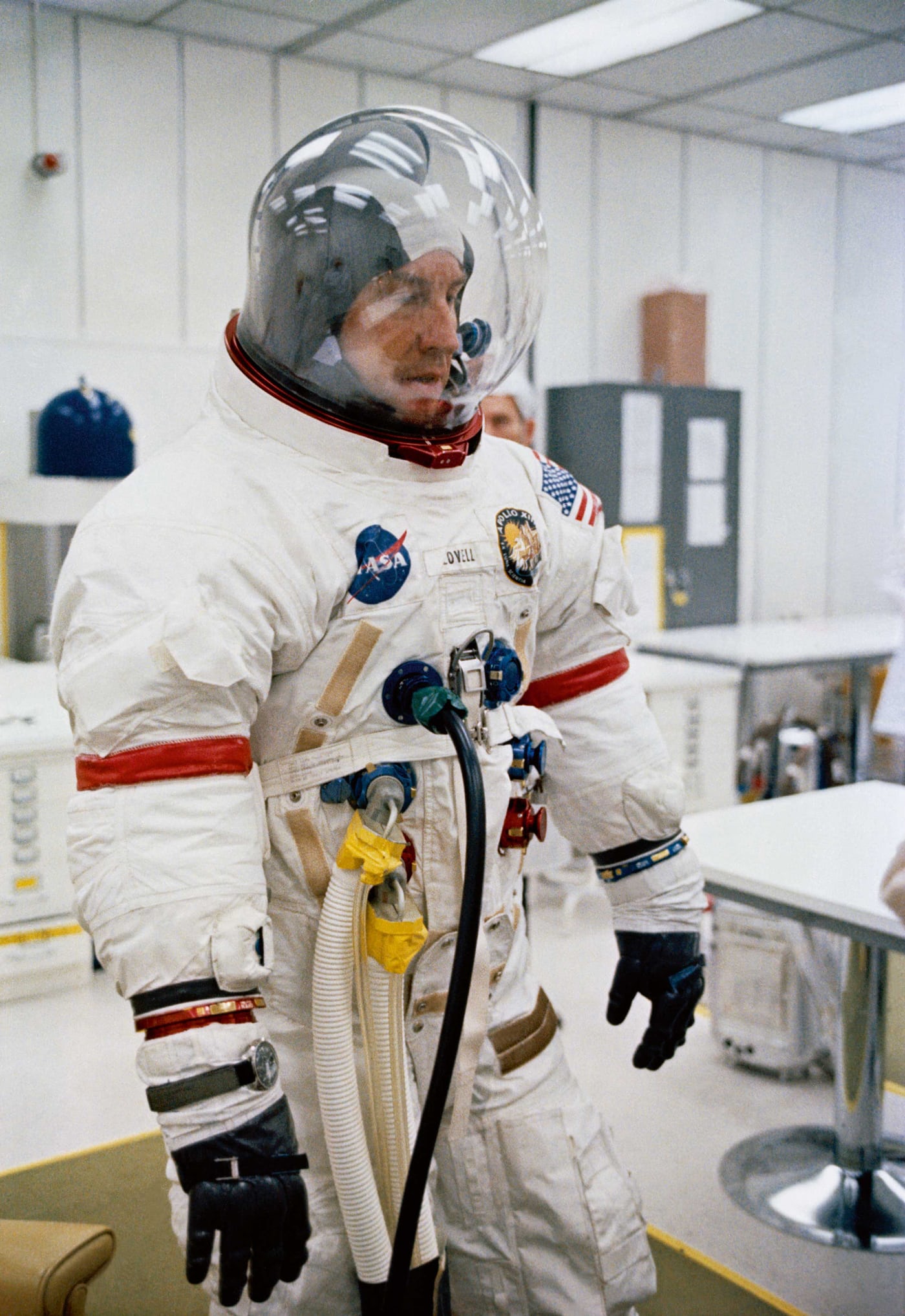
The Speedmaster Professional was part of the equipment worn by astronauts Jim Lovell (mission commander), Jack Swigert (command module pilot) and Fred Haise (lunar module pilot) when they embarked on the Apollo 13 mission on 11 April 1970. The third mission meant to land on the Moon, Apollo 13 was another scientific project that involved drilling two 3 metre-deep holes, testing a seismometer, measuring protons and electrons of solar origin reaching the Moon and more, all of that in an area of the Moon named the Fra Mauro formation. But Apollo 13 never made it to the surface.
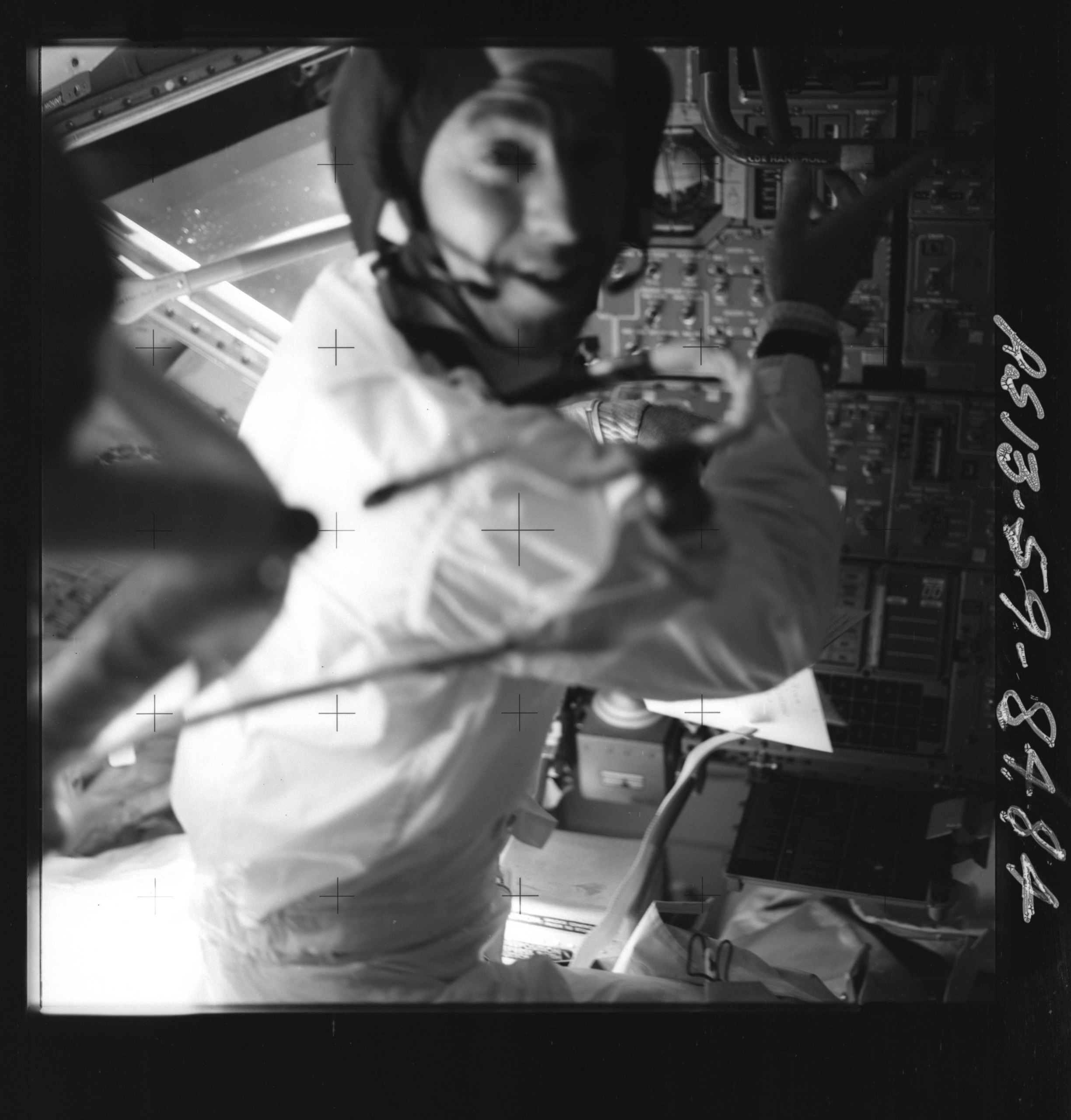
When the spacecraft reached the near Lunar environment severe problems occurred. Following a standard procedure of activating switches to control the fans in the oxygen tanks, the crew heard a “pretty large bang“, accompanied by fluctuations in electrical power and the firing of the attitude control thrusters. Twenty-six seconds later, Swigert contacted Mission Control with the now-iconic phrase: “Okay, Houston, we’ve had a problem here.”
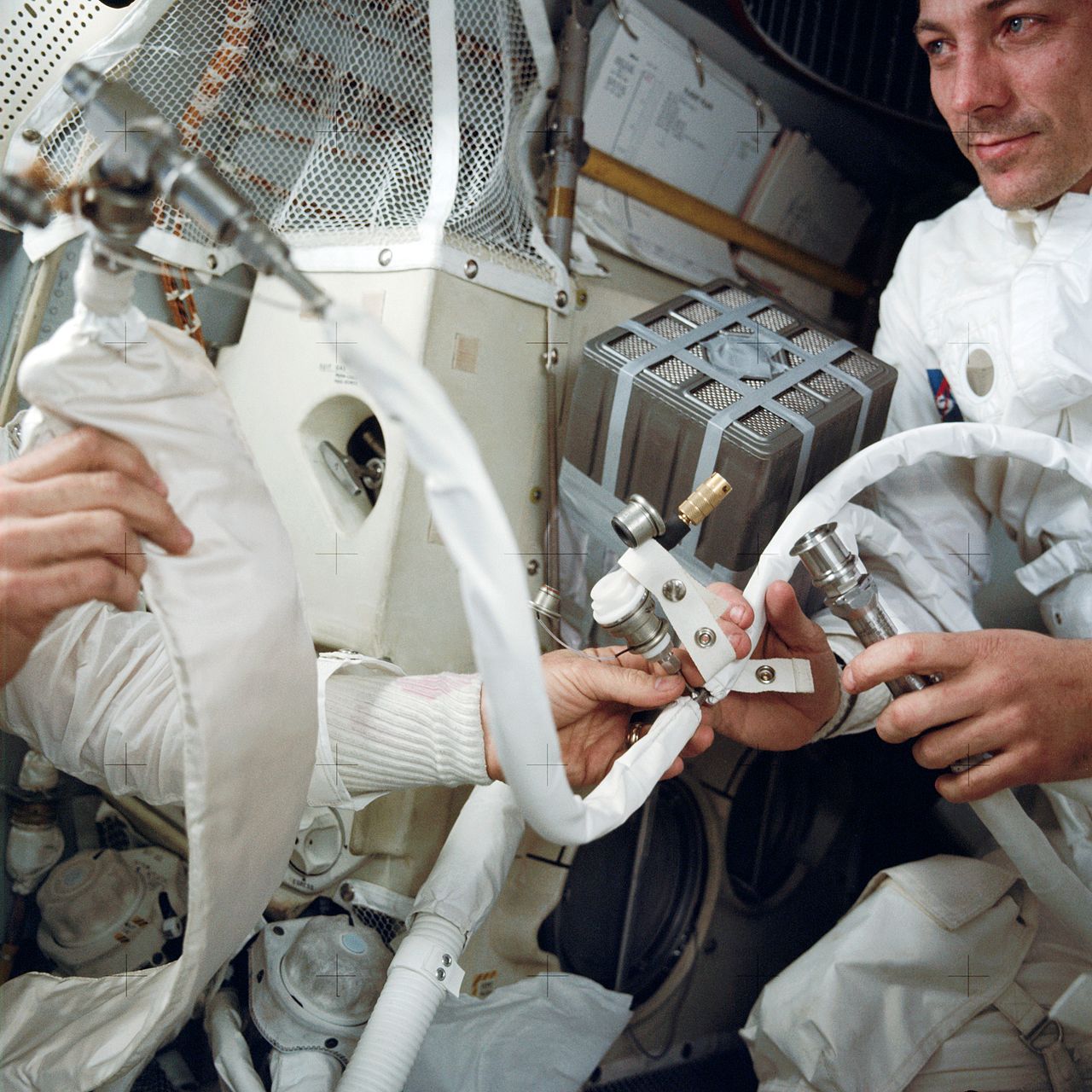
After several hours of trouble, ground control came up with a band-aid solution, requiring Lovell, Swigert and Haise to fix the issue with materials found on board the module. Once the system stabilised, the crew started its journey back to Earth, which involved using the Lunar attraction and a precisely calculated burn from the lunar module’s descent propulsion system. This is where the Speedmaster enters into action.

As explained by R.J. Broer here, as well as in Ron Howard’s movie Apollo 13, the failure of onboard instruments meant that, “the Apollo 13 crew needed the Omega Speedmaster watch, first to time ignition of the rockets to shorten the estimated length of the return to Earth, and secondly, to time the ignition of the rockets to decrease speed and raise the flight path angle for re-entry into the Earth’s atmosphere. This second operation was crucial, since any mistake in the timing could have led to an incorrect entry angle and, as a result, potential disaster for the crew“. Finally (some would say miraculously), the rest of the flight went (almost) well and the crew returned to Earth alive on 17 April 1970.
Earning the Silver Snoopy Award
The Silver Snoopy award is defined as a special honour awarded to NASA employees and contractors for outstanding achievements related to human flight safety or mission success. It consists of a sterling silver “Silver Snoopy” lapel pin flown during a NASA mission, a commendation letter and a signed, framed Silver Snoopy certificate. The award depicts Snoopy, a character from the Peanuts comic strip created by Charles M. Schulz.
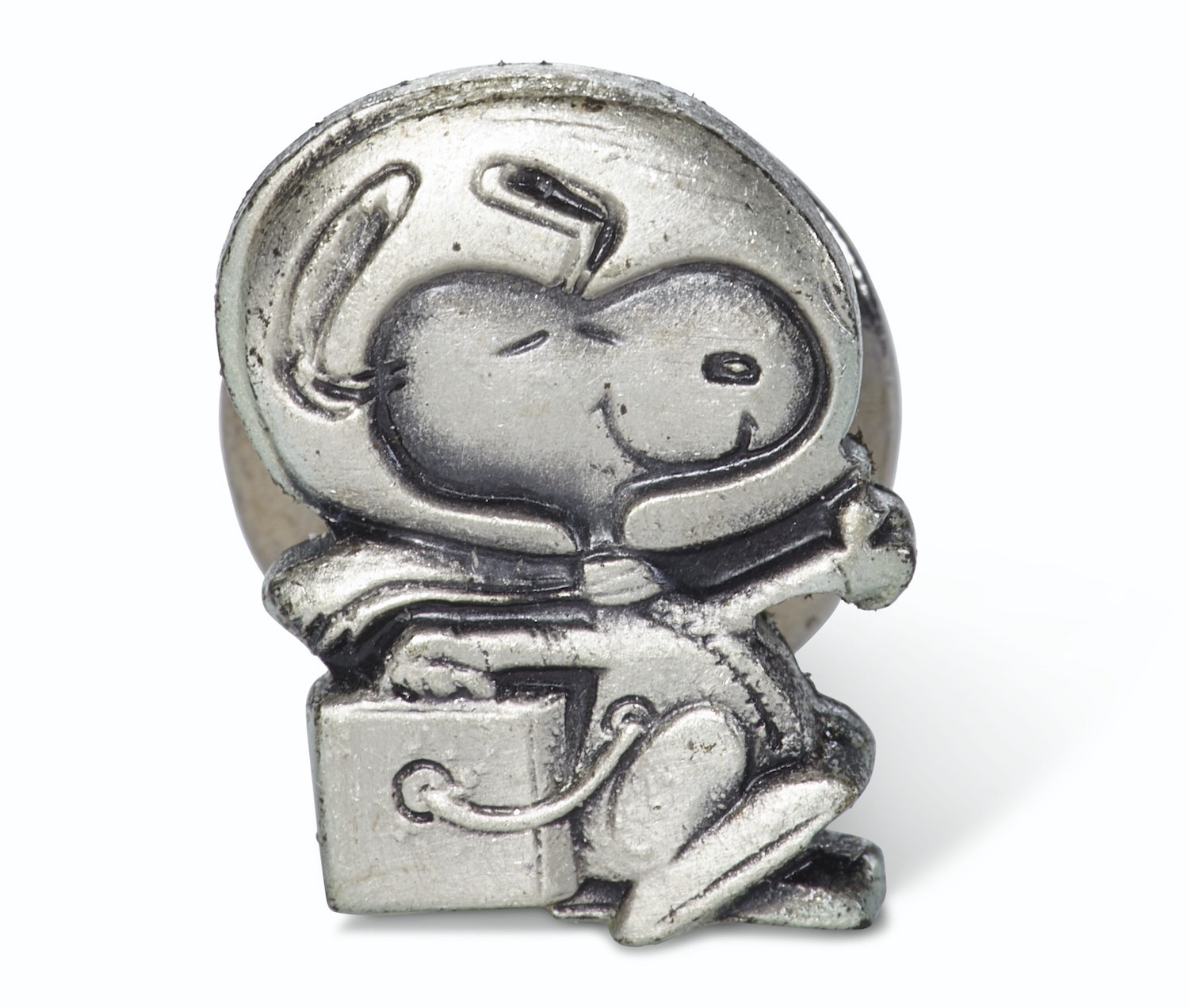
After the completion of the Mercury and Gemini projects, NASA wanted a way to promote greater awareness among its employees and contractors of the impact they had on flight safety, the flight crews and their missions. The idea for the Silver Snoopy award came from Al Chop, who was director of the public affairs office for the Manned Spacecraft Center (now called the Lyndon B. Johnson Space Center). He wanted to create an award featuring Snoopy as an astronaut to be given by astronauts in recognition of outstanding contributions by employees.
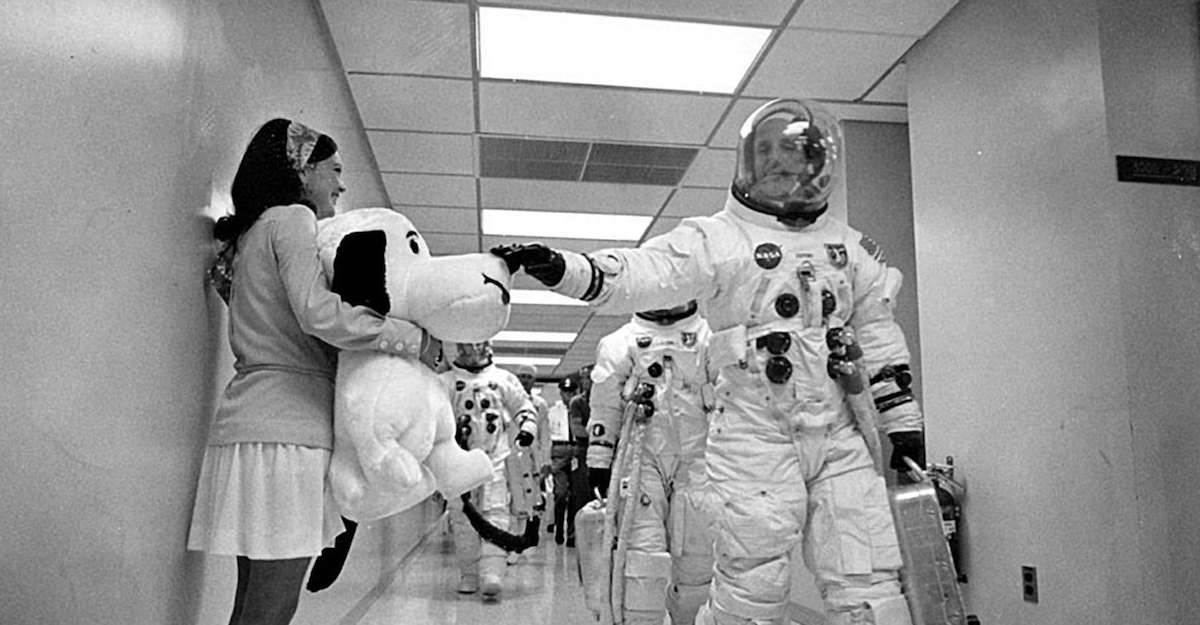
Since the Omega Speedmaster played an important role during Apollo 13, as one of the pieces of equipment that served as backup to the faulty instruments and thus helped save the crew members, on 5 October 1970 NASA gave the Omega and the Speedmaster a Snoopy award to acknowledge the crucial role the watch played.
The Previous Omega Speedmaster Snoopy Editions
While the brand already had several space-oriented limited and special editions, Speedy enthusiasts had to wait until 2003 for the brand to introduce a watch that commemorates the Snoopy award received in 1970 by the Biel-based brand.
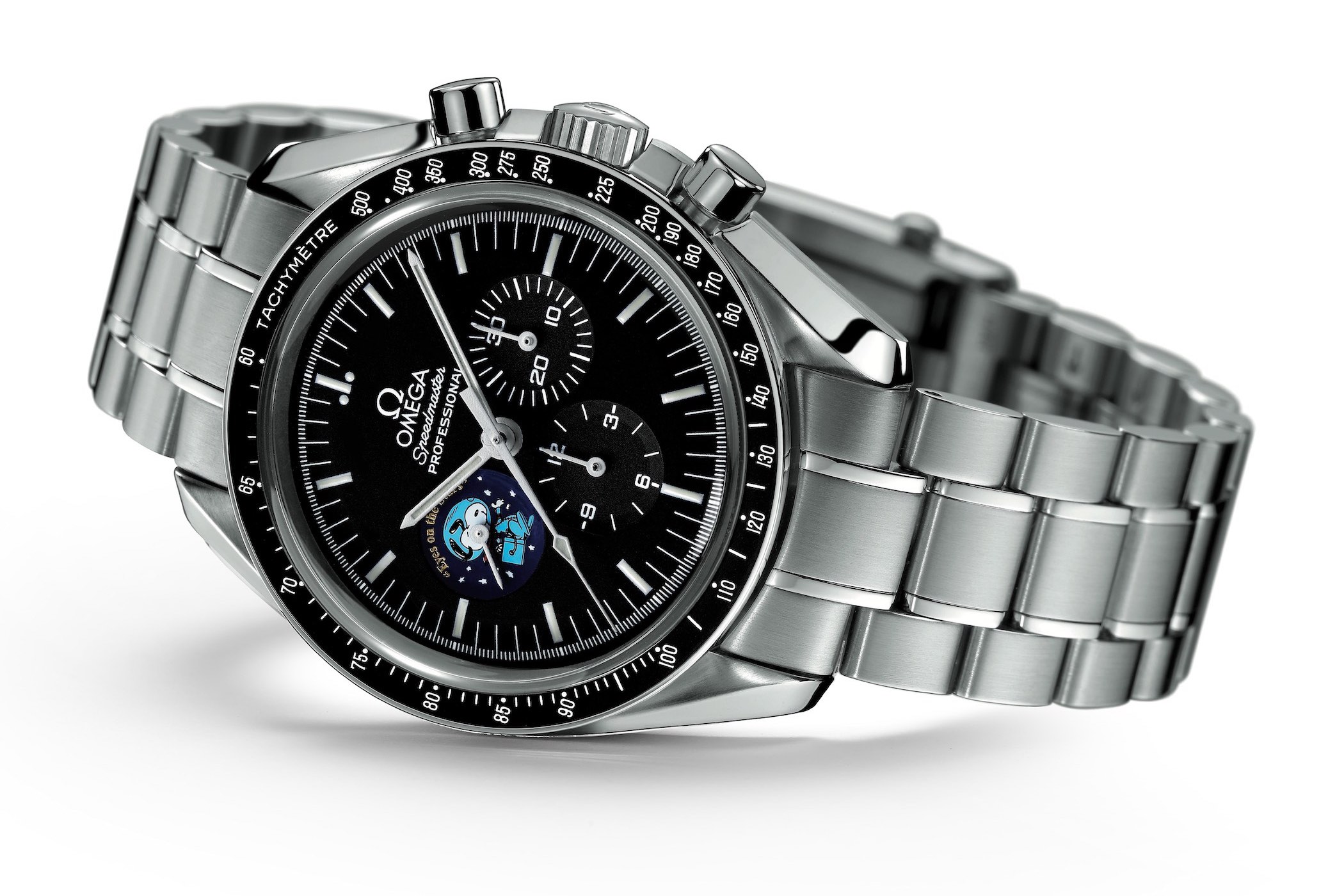

The first of the Snoopy-related Speedmaster watches was a mild evolution of the regular Speedmaster Professional Moonwatch. The main difference was the Snoopy award’s logo printed in the small seconds counter and a specific caseback, once again decorated with NASA’s Snoopy emblem on a blue background. This 2003 Speedy-Snoopy, with the reference 3578.51, was made in an impressively large batch of 5,441 pieces. There’s a reason behind this odd number, as Broer explains: “The number has to do with the 142 hours, 54 minutes and 41 seconds that the mission lasted. A bit of a stretch, in my opinion, but a nice idea.” The reason why the brand waited 33 years to launch this model, on a year that had nothing to do with a jubilee, is still a mystery.

In 2015, Omega launched a second watch inspired by Apollo 13 and the Snoopy Award, this time for the 45th anniversary of the Mission. This model, limited to 1,970 pieces, a reference to the year Omega was presented with its award by the crew members, was a more drastic departure from the regular Moonwatch. While the case and movement are identical, the white dial is unique to this watch and features several nice details, such as Snoopy in a prone position, a thought bubble with the words spoken by Ed Harris as NASA Flight Director Gene Kranz in Apollo 13 movie “Failure is not an option”, as well as a luminous 14-second track with the words “What could you do in 14 seconds?” as a reference to the 14-second course correction engine burn the Speedmaster timed during the mission. It also features a ceramic tachymeter bezel and a caseback with a silver Snoopy emblem.
Space images by NASA.

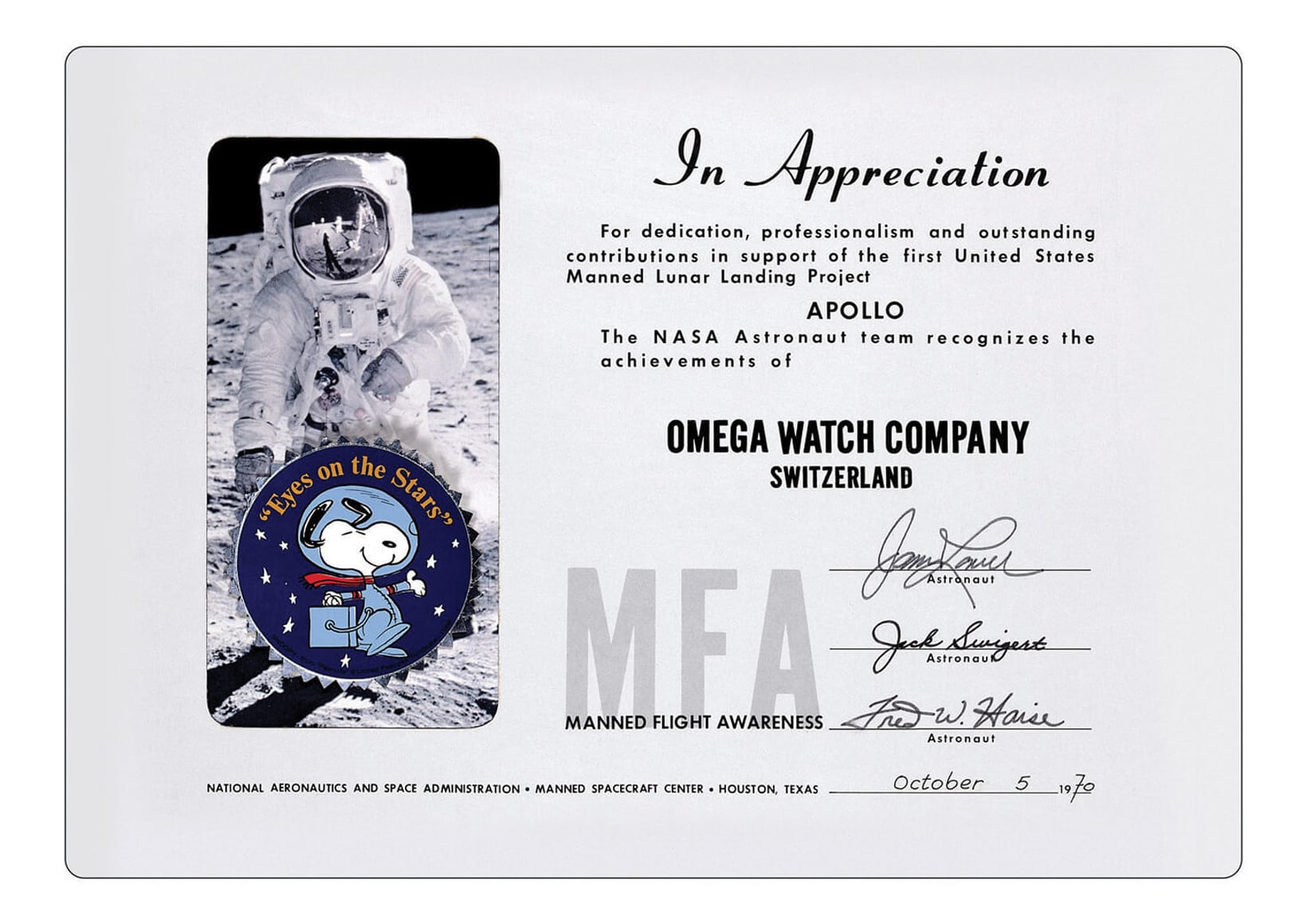
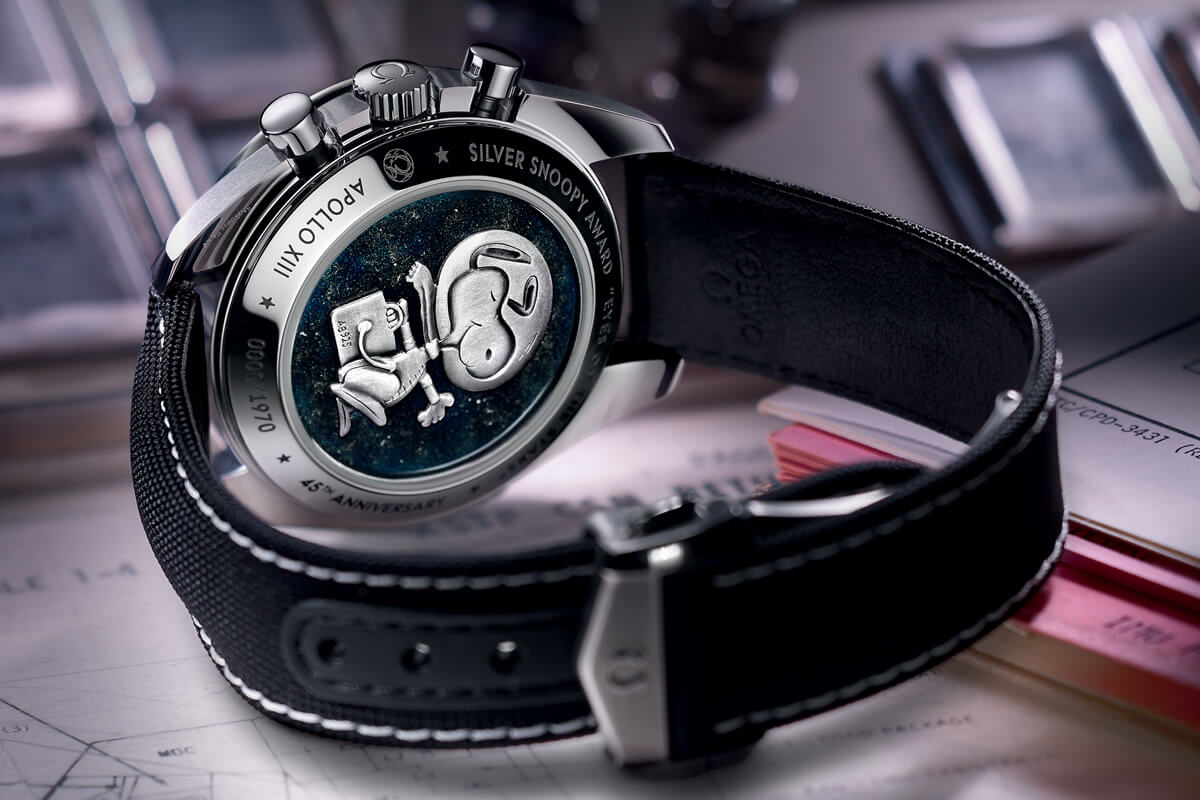
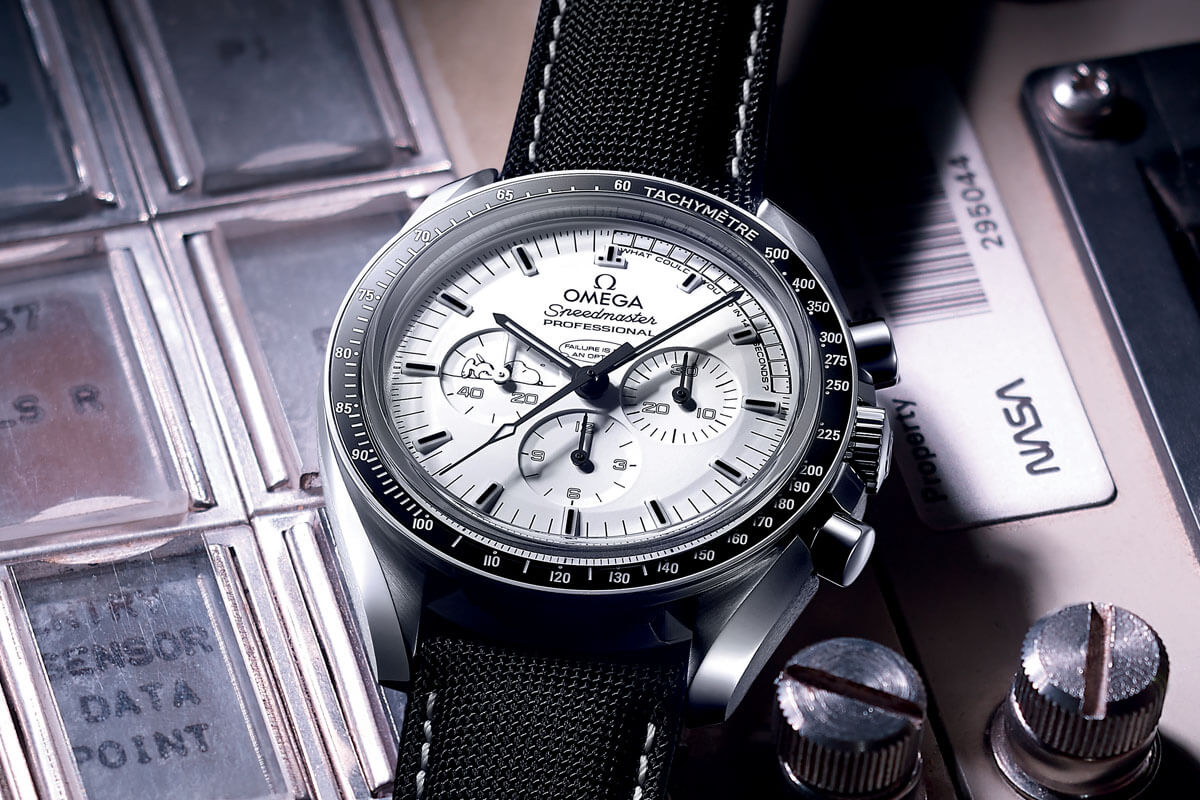



2 responses
I still don’t understand why Snoopy in the first place?
Well, as a young child in the late 60s, Snoopy and the Peanuts gang were wildly popular and a cultural icon at the time. The crew of Apollo 10 chose to nickname their command and lunar modules Charlie Brown and Snoopy, respectively. The flight of Apollo 10 in May 1969 was the “dress rehearsal” for the lunar landing that was scheduled for July 1969. Astronauts Thomas Stafford and Eugene Cernan piloted “Snoopy” within 50,000 feet of the lunar surface as they scouted the landing area for Apollo 11 while John Young orbited the moon in the command module “Charlie Brown.”
Charles Schulz’s, the creator of Peanuts, and his involvement with NASA began a year earlier than the 1969 flight of Apollo 10 when he was approached by NASA with a request to use Snoopy as their safety mascot. The Silver Snoopy Award program was instituted to improve the safety record of NASA employees and contractors. It proved to be a huge success with the astronauts and the employees. The Silver Snoopy pin is a much-coveted award. Snoopy has been on the job for 50 plus years and continues to this day in his role as NASA’s safety mascot.